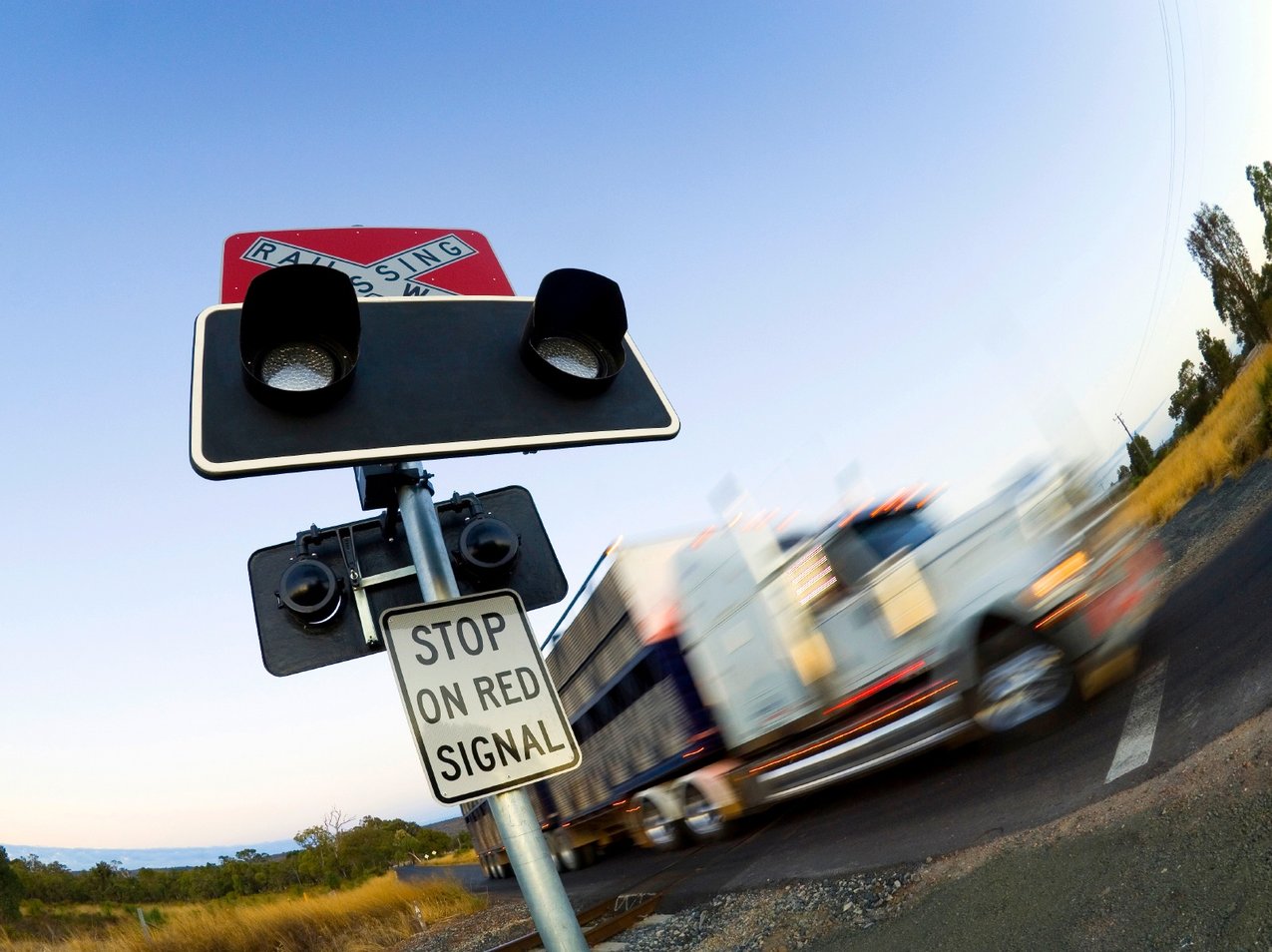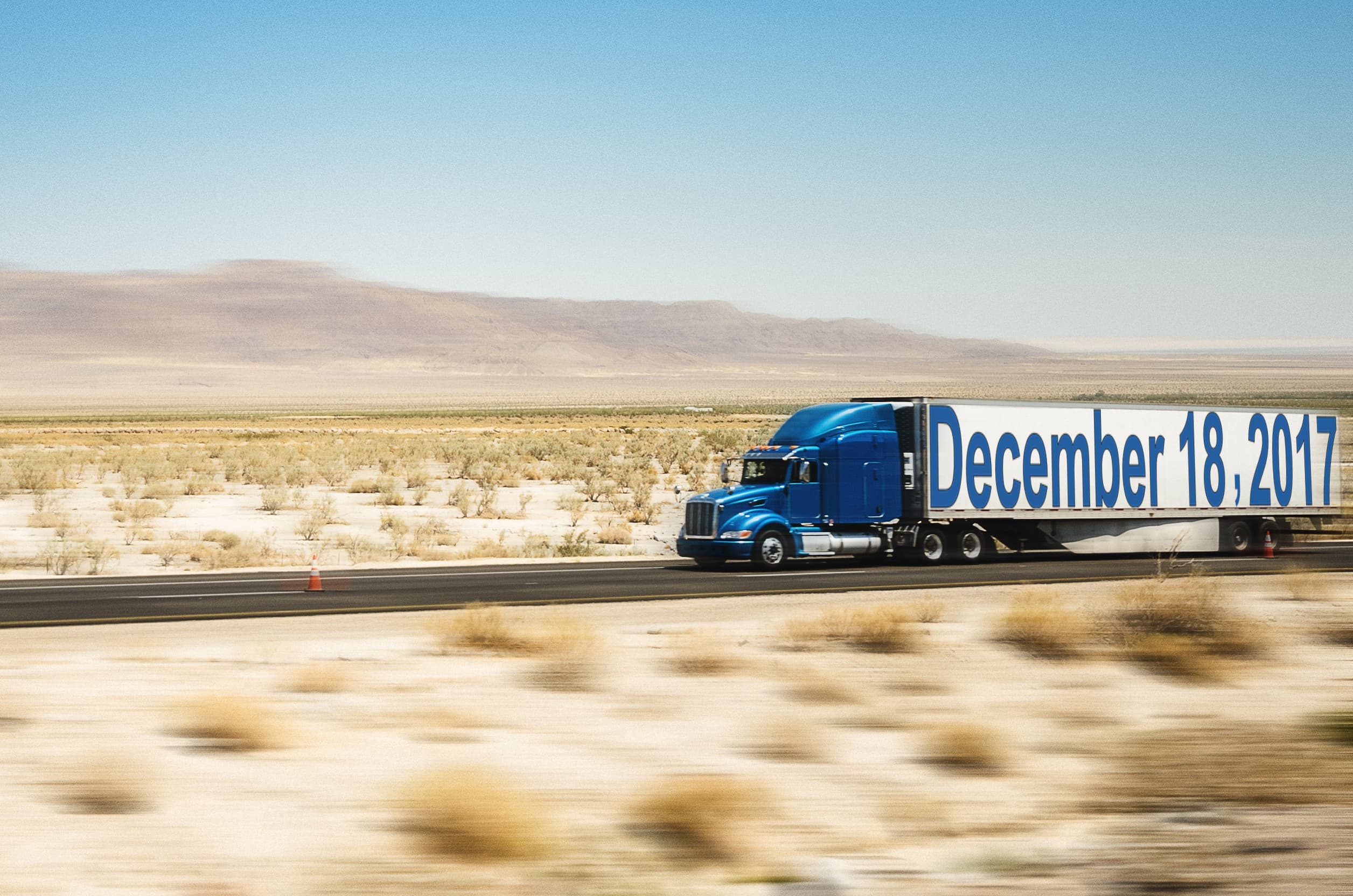Avoiding Crashes at Railroad Crossings

Side-impact collisions that occur between a tractor/trailer and train can result in devastating losses. The key to preventing crashes while crossing railroad tracks is to be able to recognize the hazards that increase the likelihood of a crash and take appropriate defensive measures. Read the information below and ask yourself if there are actions you can take to improve your driving skills and reduce the risk of a crash.
Recognize the Hazards
Environment/Equipment
- Size of tractor-trailer
- Length, width, height, and ground clearance
- Traffic congestion
- Width of railroad track crossing
- One track or multiple tracks
- Grade of the road before/after the tracks
- Difficulty starting up and clearing the rails
- Missing/inoperable railroad crossing signs
- Width of train
- Trains overhang the tracks by at least three feet
- Speed of oncoming train
- Lack of warning by train
- Poor visibility
- Adverse weather
- Low-lit area
- Obstructions
- High winds muffling the sound of train horns
Personal Behaviors
- Impatience
- Poor judgement
- Miscalculating the speed of the train
- Stopping too close to the tracks
- Inattention
- Distractions
- Complacency
- Stopping on the tracks
- Failure to crank landing gear all the way up
Essential 7 Driving Techniques
- Be attentive to the road ahead
- Watch for advance railroad crossing signs
- Slow down and approach tracks with caution
- Yield the right-of-way
- Do not attempt to beat the train
- React properly to hazards
- Crank the trailer's landing gear all the way up
- Turn on the four-way flashers when approaching railroad tracks
- Stop within 15 feet but not more than 50 feet from the nearest rail
- Turn off the radio and air conditioner
- Roll down the windows to look and listen in both directions for an approaching train
- Ensure there is sufficient space on the opposite side of the tracks without shifting gears
- NEVER stop on the tracks
Emergency Procedures
If the truck stalls or gets hung up on the tracks, and there is no sign of an approaching train, get out of the truck and move to a safe location. Call 911 immediately and notify law enforcement of the crossing’s identification number.
If a train is approaching, run in the direction of the oncoming train at a 45-degree angle away from the tracks. This can help protect you from flying debris.
The information in this article is provided as a courtesy of Great West Casualty Company and is part of the Value-Driven® Company program. Value-Driven Company was created to help educate and inform insureds so they can make better decisions, build a culture that values safety, and manage risk more effectively. To see what additional resources Great West Casualty Company can provide for its insureds, please contact your Safety Representative, or click below to find an agent.
© Copyright Great West Casualty Company 2017. The material in this publication is the property of Great West Casualty Company unless otherwise noted and may not be reproduced without its written consent by any person other than a current insured of Great West Casualty Company for business purposes. Insured should attribute use as follows: “Used with permission by Great West Casualty Company.”
This material is intended to be a broad overview of the subject matter and is provided for informational purposes only. Great West Casualty Company does not provide legal advice to its insureds, nor does it advise insureds on employment-related issues. Therefore, the subject matter is not intended to serve as legal or employment advice for any issue(s) that may arise in the operations of its insureds. Legal advice should always be sought from the insured’s legal counsel. Great West Casualty Company shall have neither liability nor responsibility to any person or entity with respect to any loss, action, or inaction alleged to be caused directly or indirectly as a result of the information contained herein.




